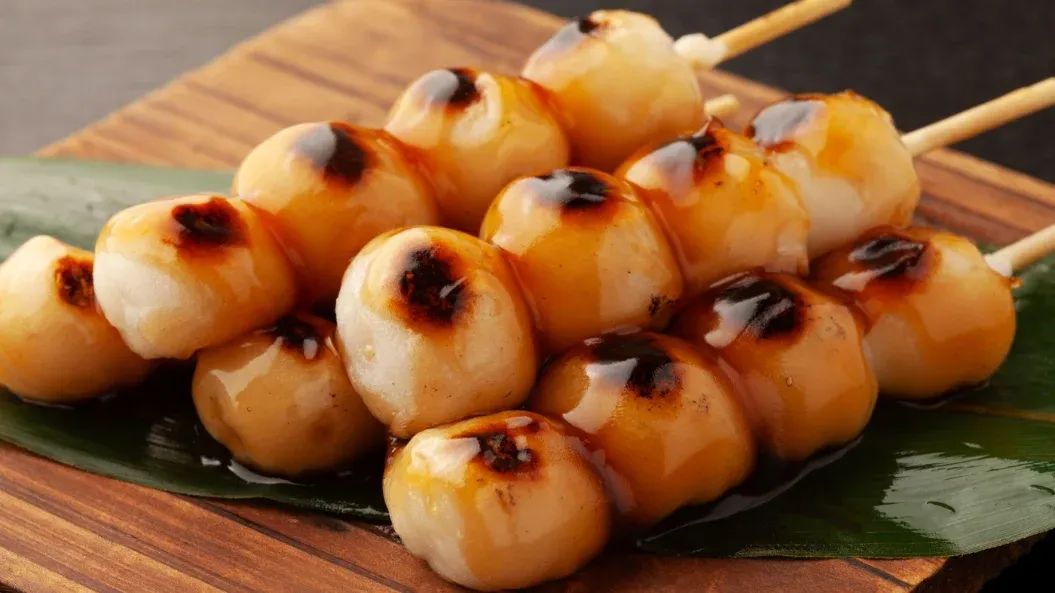Be bold with sweet dishes – soy sauce in desserts
25. June 2025

Should desserts contain salt?
While salt in desserts may sound strange at first, it's actually a long-established secret in patisserie. A pinch of salt intensifies the flavours, brings out sweetness and adds depth. However, it's important not to overdo it—a little goes a long way in boosting sweetness.
Instead of regular salt, you can also use soy sauce. This has the added advantage of introducing a savoury umami element to your desserts.
Soy sauce as a secret ingredient for desserts
Soy sauce, like our Kikkoman Soy Sauce, is much more than just an accompaniment for sushi or savoury dishes. It offers a unique combination of salty, slightly sweet and fermented flavours that can harmonise beautifully with sweet foods.
Its umami enhances and deepens the perception of sweetness, enabling certain flavours to come through more clearly. The result is a more harmonious flavour profile on the tongue. As with salt, however, the key is careful dosing.
Which soy sauces are best suited to desserts?
Depending on the type of soy sauce, the effect on desserts can vary. Shoyu, like our Kikkoman Soy Sauce, comes in a range of styles: usukuchi brings a subtle salty note without overpowering the sweetness, while koikuchi, with its more intense, slightly malty aroma, goes particularly well with chocolate and caramel.
Tamari—soy sauce made without wheat, and therefore gluten-free—has a mild, rounded flavour and pairs wonderfully with vanilla, fruit or nuts. For a more subtle sweet-salty combination, try shiro shoyu, which is milder and complements light fruit or cream-based desserts.
Why does soy sauce work in desserts?
Anyone who’s tried it can confirm that the careful use of soy sauce adds real value to sweet dishes.
- Umami brings out sweetness: Like salt, the umami flavour in soy sauce intensifies sweet notes without overpowering the dish with soy sauce flavour.
- Depth and complexity: Soy sauce adds a fermented, slightly malty note that works especially well with dark chocolate or toasted ingredients.
- A natural flavour bridge: Since soy sauce already has a touch of sweetness of its own, it blends harmoniously into desserts.
Savoury and sweet – a global tradition
The combination of sweet and savoury flavours is nothing new. Many cuisines around the world commonly use umami in desserts. In Japan, for example, goheimochi is a traditional speciality that—unlike regular mochi—is coated in a sweet-salty sauce made from sugar, soy sauce and mirin. Mitarashi dango is a similar example—small sticky rice balls on skewers with a sweet soy glaze.

Matcha desserts are also often refined with a pinch of salt or soy sauce to balance out their bitter notes. In France, salted caramel (caramel au beurre salé) is a real classic, where a touch of salt emphasises the sweetness and intensifies the flavour of the caramel.
In Southeast Asia, the balance between sweet and salty is equally important. In Thailand, mango with sticky rice is traditionally served with lightly salted coconut milk to bring out the fruit's aroma. In Mexico, hot chocolate is often seasoned with sea salt and chilli to deepen the cocoa notes and create a more rounded taste experience.
Another example is peanut butter and jelly sandwiches—or salted peanuts in chocolate chip cookies—from the USA, which show just how well savoury and sweet flavours can work together. There's no doubt: a hint of salt or umami can take a dessert to a whole new level.
Which ingredients benefit from soy sauce?
The real skill lies in using soy sauce in desserts not as a dominant ingredient, but as a finely balanced element. This opens up all sorts of exciting combinations:
- Chocolate: Dark chocolate in particular benefits from the umami note in soy sauce. It deepens the cocoa flavour without making the chocolate overly bitter.
- Vanilla: The soft, warming sweetness of vanilla is beautifully contrasted by a dash of soy sauce. Perfect in ice creams and puddings.
- Caramel: Since caramel gets its slightly bitter depth from melted sugar, soy sauce can bring balance and depth to the flavour.
- Strawberries: The natural freshness and acidity of strawberries are intensified by soy sauce, making them taste even more aromatic.
- Citrus fruits: Oranges and lemons gain a deeper flavour dimension from soy sauce—especially interesting in sorbets or jams.
- Coffee: Soy sauce can enhance the roasted notes in coffee and, when combined with sweet ingredients such as milk or cream, create a well-rounded flavour profile.
- Nuts: Whether almonds, hazelnuts or walnuts—their natural oils pair wonderfully with the savoury depth of soy sauce.
- Other fruits: In Japan, it’s common to drizzle a few drops of soy sauce over fruits like watermelon or pineapple on hot summer days—both also taste great grilled.
Ideas for using soy sauce in recipes

Here are a few ideas for creatively incorporating soy sauce into your desserts:
- Brownies: Replace some of the salt in your recipe with a dash of soy sauce to intensify the chocolate notes.
- Chocolate mousse: Similar to brownies, the chocolate flavour is enhanced here too. A dash of soy sauce also adds a touch of umami to the dessert.
- Pralines: Sweet soy sauce gives you the best of both worlds—a distinct sweetness with a savoury umami note.
- Panna cotta with soy caramel: Caramel sauce with a hint of soy sauce as a topping for a creamy panna cotta.
- Ice cream with soy sauce: Works especially well with vanilla or chocolate ice cream.
- Fruity sorbet: Mix a dash of soy sauce into a strawberry or citrus sorbet to bring out the natural sweetness.
- Almond biscuits: Add soy sauce to the pastry to give it a deeper, nuttier flavour.
Experiment with soy sauce!
Soy sauce in desserts might still be an insider tip—but that’s exactly what makes it so interesting! A little experimentation can turn a classic dessert into a culinary highlight. So why not give it a try? Your guests will be pleasantly surprised!



